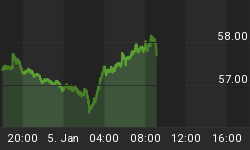The number of bears among independent financial newsletter writers increased this past week to 67%, according to the FIFTITM Index1 from www.InvestorsInternet.com. The previous week the number of medium-term bears was 49%. These figures reflect the growing pessimism that was brought to light in September by the sharp drop in Consumer Sentiment. as shown by the survey results from the University of Michigan and The Conference Board.
Investor sentiment measurements are producing a wide range of results at the present time. In addition to the bearish value of the FIFTITM Index, the Spectrem survey of affluent investors just hit its lowest reading. The American Association of Independent Investors also has more bears (39%) than bulls (32%). The survey by www.lowrisk.com has equal numbers of bulls and bears at 38% each. In contrast, Investor's Intelligence has 50% more bulls than bears (45.8% bulls and 29.2% bears).
Like the FIFTITM Index, the Investor Intelligence figures are based on survey of the advice of newsletter writers. Editors at Investors Internet and Investors Intelligence make a subjective assessment of the advice that the newsletters are providing. The difference between the two indexes may be due to the fact that the FIFTITM Index is based on free newsletters from independent writers who are not part of a broker, bank or trading service, and is divided into short, medium and long-term opinions. The short-term FIFTITM index, in contrast to the medium-term, has more bulls (37%) than bears (26%), with 37% neutral. Many of the independent newsletter writers are expecting a short-lived bounce and then a further decline in the stock market.
The major question raised by the newsletter writers is will there be a seasonal rally? Last year there was a significant rally from late October until late December (The Dow rose nearly 1,000 points) and the bulls are expecting the same again.
The bulls argue for upside from both a fundamental and technical point of view. A positive earnings season coupled with the seasonally best time of the year for stocks and brisk reconstruction activity will ensure the traditionally rally to the end of the year and beyond. Technically, the Dow is well within the 10,000 to 11,000 trading range of the last 11 months. The S&P 500 has broken down out of its rising wedge pattern of the last 18 months, but false breakouts are common. The Nasdaq is well above 2,000, around which its long term support line touching the August 2004 and the April 2005 lows resides.
Those neutral on the intermediate term market say that much depends on the Federal Reserve. If the Fed really keeps tightening beyond current expectations the market will go down, but core inflation is not bad and the economy has weathered the hurricanes well so there is hope that the Fed will ease in the near future.
The bears expect more downside because of the many problems being faced. Rising interest rates, high oil and natural gas prices, a bursting housing bubble, consumers tapped out, consumer expectations falling dramatically as evidenced by the September Consumer Confidence surveys, high levels of private and public debt, the potential for Asian countries to reduce their dollar purchases, the continuing loss of manufacturing jobs, and unsustainable levels of company profits are amongst the problems they list.
Which opinion will win the prize is difficult to say at this time but the end-of-year rally needs to start in the next few weeks if it is to be substantial, so an answer to the question is nearing.
The above is based on the free, weekly newsletter provided at www.investorsinternet.com.
1The FIFTITM Index is based on Free Information From The Internet, and in particular, on advice provided by fifty independent newsletter writers selected from the book "The Investor's Free Internet".















